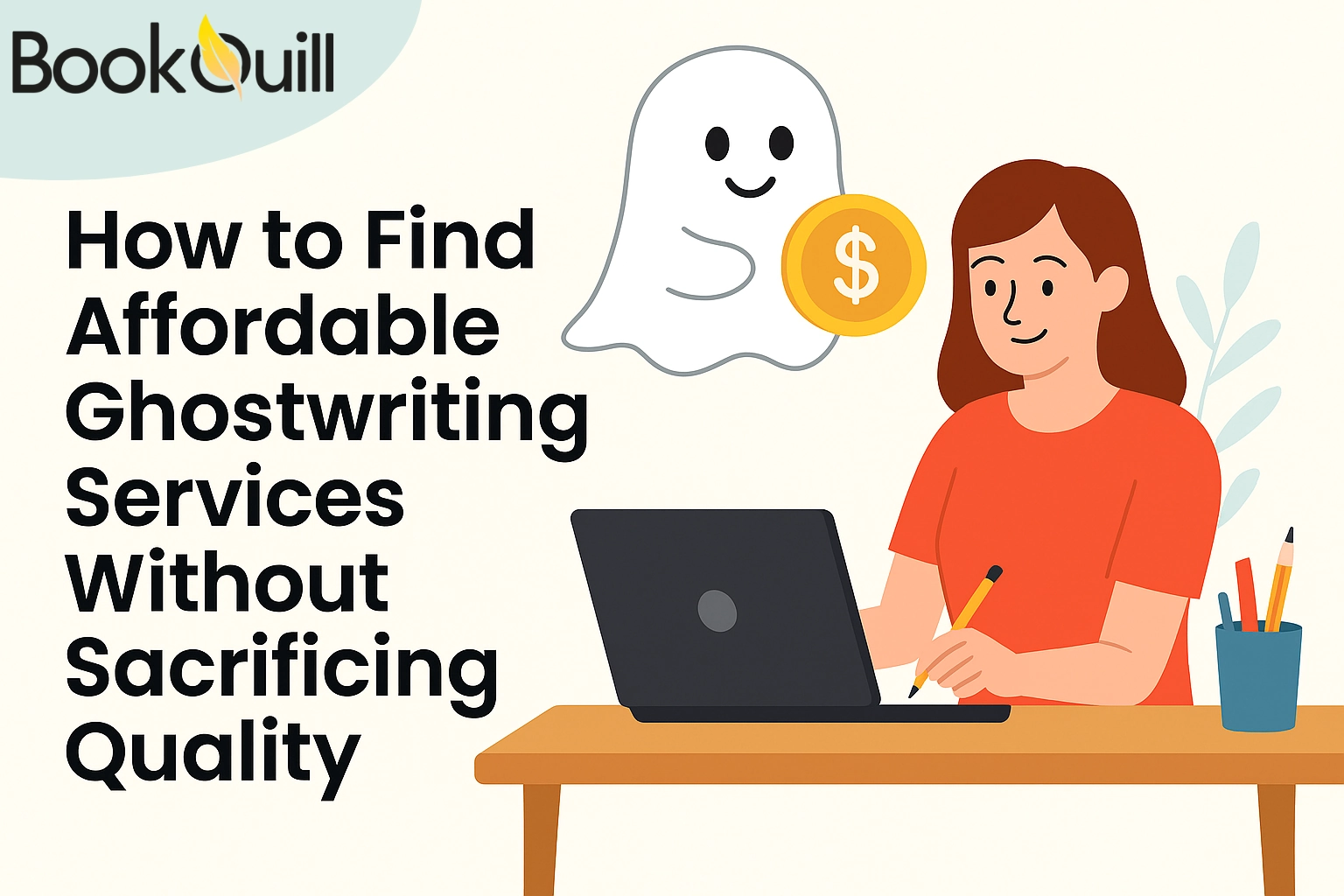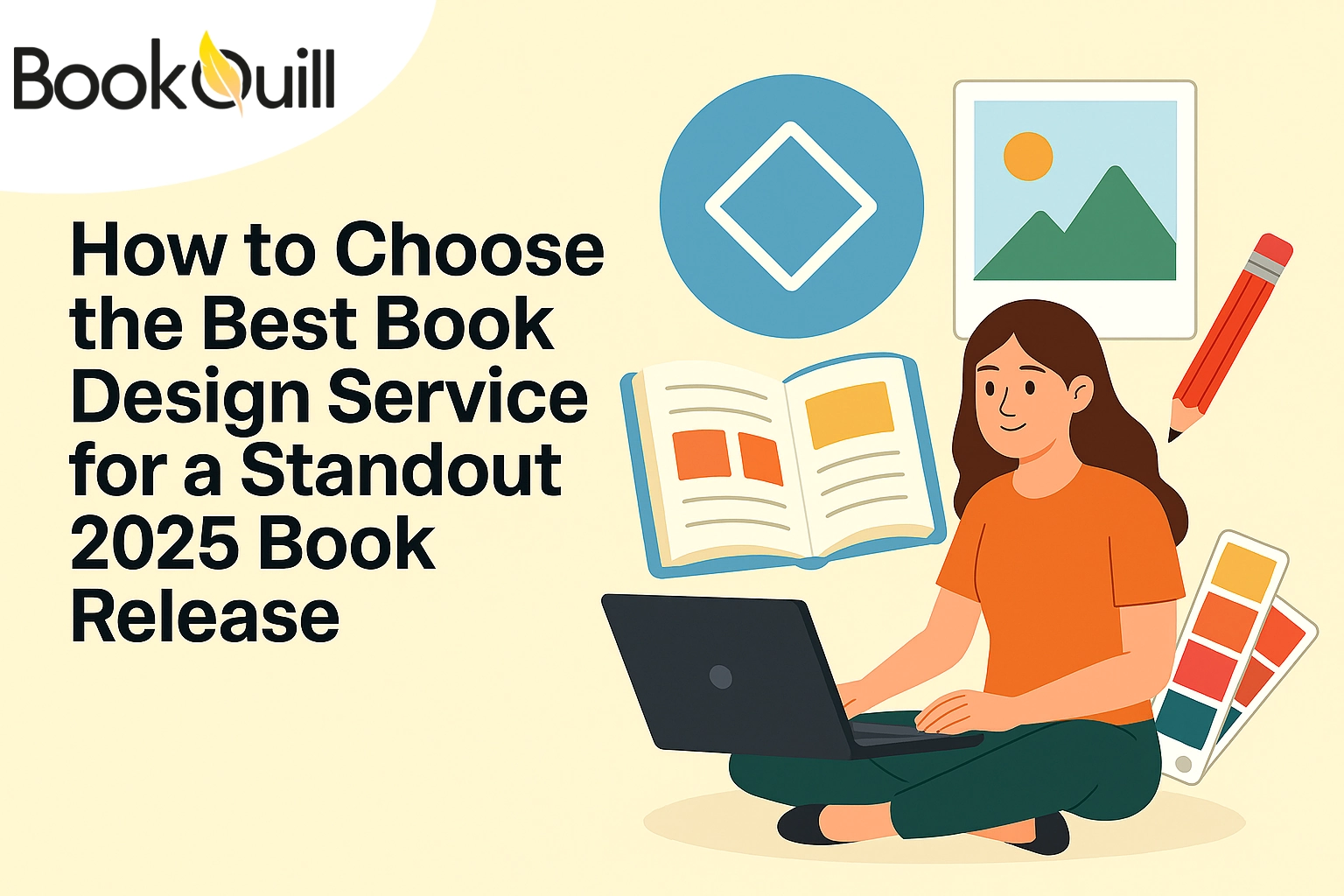Table of Contents
Explore Blogs
Trending on Ebook
Is Your Self-Pub Book Screaming ‘Amateur Hour’? Here is How to Muzzle It.

So, you have just launched your first self-published book. You nervously refresh Amazon every hour, hoping for reviews. Then it happens, your first piece of feedback. But instead of praising your storytelling, someone writes:
“Couldn’t get past the formatting. Felt like a school project.”
Ouch!
That’s the reality many self-published authors face. Despite the passion and effort they put into their writing, something about the final product screams “amateur hour,” or your novel looks like it was printed at the office supply store next to someone’s tax return.
Readers do judge a book by its cover, its interior, layout, feel, and print quality. In today’s book market, presentation matters more than ever. If your book looks and feels unprofessional, it might never get the chance it deserves.
But fortunately, you don’t have to go it alone.
This blog is your guide that can help turn your self-published book from mediocre to must-read. No problem if you’re just figuring out how to publish a book, or you have already tried to make your own book from scratch. We are going to cover it all. So, let’s get started!
Key Takeaways
- Presentation Matters: Even the best-written book can fall flat if the formatting, cover, or print quality feels DIY. Investing in a professional book printing service helps your story get the respect it deserves.
- Understanding the Writing Process: Remember, the writing process doesn’t end at “The End.” Being fully aware of the writing process is essential for publishing.
- Publisher Makes Smart Choices: If you’re figuring out how to become a publisher, remember it’s about making strategic decisions that improve quality, sales potential, and reader trust.
- It’s best to work with a professional: You can make your own book, but not alone. Work with experienced self-publishing book companies to get it right.
- Affordable Doesn’t Mean Cheap: The right affordable book printing service delivers quality without the sticker shock, helping self-published authors stay on budget and brand.
What Is the Writing Process?
Let’s get one thing straight: writing a book isn’t just putting out 80,000 words. The real writing process is more like constructing a house. If you skip the foundation, the roof is likely to fall sooner or later. And that’s where a lot of self-published books go wrong. They’re built fast, not built well.
1. Brainstorming Isn’t Optional
Every great book starts with an idea, but that’s just the seed. Plot outlines, character arcs, and theme development all happen before a single paragraph is “finished.” Understanding the writing process is important because it keeps your book from reading like a diary entry.
2. Write, But Know It’s a Draft
The first draft isn’t supposed to be perfect. But it’s supposed to exist. But what happens next is more important: rewrites. Edits. Beta readers. Manuscript assessments. Many self-published authors hit “Upload to Amazon” the minute they hit “The End.” That’s not how to publish a book; that’s how to disappoint your readers.
3. Feedback Is Important
Your mom loves your book. That’s great. But unless Mom is a professional editor with a red pen and zero mercy, you need outside eyes. Honest critique shapes better work. Smart authors invest in developmental editors, line editors, and proofreaders, and not just because they can’t catch their own typos, but because they know quality sells.
4. Know When to Ask for Help
You don’t have to be a designer, formatter, marketer, or writer. If you’re focused on building a powerful story, leave it to people who do it daily. That includes publishing experts, layout specialists, and yes, professional book printing services that won’t ruin your gorgeous prose with cheap paper or misaligned margins.
How to Make Your Own Book without Making a Mess
So, you have written your manuscript, edited it, and you are ready to release it. You think, “I’ll just format this myself, put a cover on it, and upload it to Amazon. And published!”
That’s certainly one way to do it. But it’s also how many authors end up with books that scream “DIY disaster.”
Let’s talk about how to make your own book in the right way and when to call for assistance.
1. Format: The First Thing Readers Notice
You might be tempted to design your book in Word. Please don’t!
Word processors are great for writing but not for formatting. What you’ll end up with are awkward paragraph indents, inconsistent headers, and strange spacing. Readers won’t tell you what’s wrong; they’ll just stop reading.
Professional formatting ensures your book looks like… well, a book. This includes:
- Correct margins
- Proper chapter headings
- Clean, readable typography
- Consistent page numbers and spacing
For best results, work with experts from self-publishing book companies who know how to work on novels, nonfiction, poetry, and everything in between.
2. Cover Design: This One’s Huge
Unless you’re a graphic designer, creating your own cover is risky. Even if your story is gold, a cover that looks like it was made in MS Paint will send readers running. A good cover communicates genre, tone, and quality, all in a single glance.
Professional book companies often have design teams or partners who specialize in eye-catching and genre-appropriate covers. They’ll give you files that are print-ready, not just good-looking on a screen.
3. ISBNs, Barcodes & Back Matter
Want your book to be taken seriously? Don’t forget the backend details, i.e., ISBNs, copyright pages, barcode placement, acknowledgements, and even your author bio. These aren’t optional. They’re expected, and leaving them out is like forgetting to put the author’s name on the cover.
How to Become a Publisher without Becoming Your Book’s Worst Enemy
Publishing your own book doesn’t just mean hitting the “publish” button on Amazon. If you’re going the self-pub route, you are the publisher. That means every decision, from ISBNs to print specs, is up to you. Scary? A little. Empowering? Absolutely, if you know what you’re doing.
Unfortunately, a lot of authors take on the title of “publisher” without really understanding what it means, and the result is a book that looks unfinished, feels cheap, and gets lost in the crowd.
So, What Does a Publisher Actually Do?
To understand how to become a publisher, you need to understand the hats a publisher wears. These include:
- Project manager
- Budget controller
- Quality assurance
- Distribution coordinator
- Marketing strategist
That’s a lot to juggle. If you skip steps or make uninformed decisions, your book suffers, and so does your credibility.
1. ISBNs and Metadata Matter
An ISBN tells distributors, libraries, and booksellers that your book is legit. However, a lot of authors skip it or use a free one from a platform, which can limit their control.
Then there’s metadata, your book’s title, subtitle, description, BISAC codes, keywords, and categories. If these aren’t optimized, your book won’t be found, no matter how great it is.
Most professional self-publishing book companies guide you through these steps or handle them altogether, making sure your book is correctly registered, searchable, and eligible for wider distribution.
2. Printing Logistics
Becoming a publisher means handling the printing details, too. This means being aware of trim sizes, paper weights, spine calculations, and binding choices. If that sounds overwhelming, that’s because it is. And that’s not even close to shipping, storage, or returns management.
This is where working with a premium book printing service pays off. They have handled thousands of books, know exactly how to optimize files for press, and ensure your book looks polished.
3. You Don’t Have to Do It Alone
Do you know what the biggest mistake that self-publishers make? Believing they need to be experts in everything. You’re the author, you’ve done the hard part. Becoming a publisher doesn’t mean becoming a martyr. It means choosing smart partners. And here’s where reliable self-publishing book companies act as your production crew.
What’s Printing Got to Do with It?
You can have a brilliantly written manuscript, a killer cover, and perfect formatting, but if your book comes off the press looking like it was printed on recycled grocery receipts, all that hard work goes straight into the trash. So, you can consider printing to be the final and loudest first impression.
1. The Unspoken Truth about Self-Pub Failures
Many authors spend months perfecting their manuscripts and then completely undercut their success by choosing cheap and low-quality printing. We have all seen those books, covers that curl, ink that smudges, paper so thin you can read three pages at once.
So remember, when readers physically hold your book, they’re subconsciously evaluating:
- The texture of the cover
- The weight and brightness of the pages
- The sharpness of the print
- The alignment and binding
And trust us, they notice when it’s off.
2. Understanding Your Options
Here’s where it gets tricky. Not every budget allows for a premium hardcover with gold foil and deckle edges. And that’s okay, because not every book needs luxury, but every book deserves quality. The key is choosing the right level of printing service for your project:
Affordable book printing service: Ideal for debut authors, small print runs, and budget-conscious launches. You can still get clean and professional-looking results without going broke.
Premium printing service: Perfect for collectors’ editions, photo books, or authors investing in large print runs with long shelf lives. Expect top-tier materials, advanced binding techniques, and luxurious finishes.
Whatever your tier, the goal is the same, and that is to make your book look like it belongs on the shelves of a major bookstore.
3. Why This Isn’t the Place to Cut Corners
The truth is, bad printing makes a good book look bad.
That’s why authors work smart with printing partners who specialize in books, not generic print shops that also do flyers and lawn signs.
When you work with a professional book printing service like ours, where book printing is the core service, you’re not just getting ink on paper. You’re getting:
- Format validation to prevent costly reprints
- Paper and finish recommendations
- Accurate spine width adjustments
- Consistent, scalable quality no matter your print quantity
Professional printing is the bridge between “self-published” and “professionally published.” And when your book crosses that bridge? Readers notice and respect it.
Red Flags: How to Know If Your Book Is Screaming ‘Amateur’
No keyword requirements here. So you can call it your wake-up call checklist.
Let’s get brutally honest for a moment. You might think your self-published book looks pretty good… but does it read like a professional production? Does it feel like something that belongs on the same shelf as traditionally published bestsellers?
It’s easy to be too close to your own project to see the flaws. So here’s a quick checklist. Here are a set of red flags that can tell you if your book is secretly screaming “amateur hour.”
1. Formatting Faux Pas
- Margins too narrow or inconsistent? Readers don’t want to feel like the text is elbowing them in the gut.
- No running headers or page numbers? It was a big giveaway that it wasn’t professionally laid out.
- Chapter titles orphaned on the last line of a page? That’s a visual disaster, and it’s fixable.
2. Typography Trouble
- Times New Roman? Comic Sans? Unless your book is a retro internet satire, these fonts need to go.
- Inconsistent font sizes or spacing? Readers notice, even if they can’t articulate why it feels “off.”
- Double spaces after periods? A small issue, but it signals a lack of refinement.
3. Cover Catastrophes
- Pixelated or blurry images? That’s an instant trust-killer.
- Text running too close to the edge or spine? Rookie mistake.
- Stock photo that screams “clip art”? Yep, readers will clock it immediately.
4. Structural Slip-Ups
- Typo on page one? That’s a one-star review waiting to happen.
- Inconsistent tense, head-hopping, or awkward phrasing? Time to invest in editing.
5. Print Quality Pitfalls
- Covers that bend like wet paper towels? Low-grade stock is to blame.
- Ink bleeding through pages? Paperweight matters more than you think.
- Binding cracks after one read? That cheap print job is costing you readers.
So What Now?
If any of these red flags hit too close to home, don’t panic. You’re not alone, and you’re not stuck. Every author hits a learning curve. The key is knowing when to pivot and partner with professionals who can uplift your book from mediocre to magnificent.
Don’t let a few avoidable mistakes sabotage your credibility. There’s still time to fix it, and that’s exactly what we’ll cover next.
Fixing the Screams: Your Book’s Makeover Plan
So you’ve recognized the red flags. Maybe your font choices are… not right. Maybe your cover looks weird. Or maybe your print copy reads like a Word document with a spiral binding. Whatever the case, here’s your step-by-step book makeover plan to muzzle the amateur hour and level up your book’s quality.
Step 1: Hire an Editor
If you haven’t already, now is the time. Professional editors can help you fix flow, structure, tone, pacing, and logic.
You might think you’re saving money by skipping this, but reader reviews will cost you far more in the long run.
- Developmental editing reshapes the story.
- Line editing polishes the prose.
- Proofreading catches what you missed.
You don’t need all three, but you need at least one.
Step 2: Rethink the Layout
This means no more uneven spacing, orphaned headings, or weird line breaks. A clean and consistent layout immediately upgrades your book’s readability and professionalism.
Look for experts who are the best and can ensure that your book’s interior meets the standards of real bookstores and reviewers.
Step 3: Reprint with Purpose
This is your moment to say goodbye to flimsy paper, off-center text, and covers that warp in the sun.
Working with a professional book printing service means:
- Correct file setup
- Trim options that match your genre
- Paper quality that feels like a “real” book
- Consistent, scalable print runs that don’t break your budget
If you are choosing to go for an affordable book printing service or looking to upgrade to premium finishes, BookQuill has multiple options available.
Conclusion
The hardest part was writing the book. You sat down, again and again, and turned your thoughts into pages. And finally, you have done it. But if you cut corners at the finish line, you risk tripping over your own story.
Remember, your readers don’t see your writing hours. They don’t know how many drafts you’ve rewritten or how many nights you spent battling imposter syndrome. What they do see is the final product, the way it looks, feels, and flows in their hands. And if that product doesn’t meet their expectations, they’ll stop reading it.
That’s why professional book printing services are a necessity for authors who take their work seriously.
And don’t worry, you don’t have to handle this by yourself. Whether you’re figuring out how to publish a book for the first time or you’ve realized it’s time to reprint and relaunch your current title, we are here to help you bring it to life the right way!
Frequently Asked Questions
What Is The Writing Process For Self-Publishing A Book?
The writing process includes outlining, drafting, revising, editing, and proofreading. Skipping these steps often results in a self-published book that feels unfinished or unprofessional.
How Do I Make My Own Book Without It Looking Amateur?
To make your own book professionally, invest in editing, design, formatting, and use a professional book printing service to ensure quality and readability.
What Do Self-Publishing Companies Actually Help With?
Self-publishing book companies guide you through editing, design, ISBN registration, formatting, and printing, helping your book meet industry standards without doing it all yourself.
What’s The Difference between Affordable and Premium Book Printing Services?
An affordable book printing service offers budget-friendly quality, while a premium printing service delivers top-tier finishes for high-end projects.
How Do I Become A Publisher And Still Keep My Book Professional?
Learning how to become a publisher means managing editing, printing, and distribution, but smart authors partner with experts to avoid costly mistakes and ensure professional results.
What Are The Best Book Printing Companies For Self-Published Authors?
The best printing companies, like BookQuill, specialize in books, offer transparent pricing, quality materials, and customer support for authors.
About Author
Hi, my name is Zachary Stone I’m a book marketing nut — or, as I like to call myself, a “Shelf Marketer.” No, I don’t sell wooden shelves; I market the books that are left forgotten on them. If you want your book to be the next bestseller, I am your go-to person. I am here to remind you that it’s not just about writing a great story — it’s about building a buzz among people with great campaigns.




